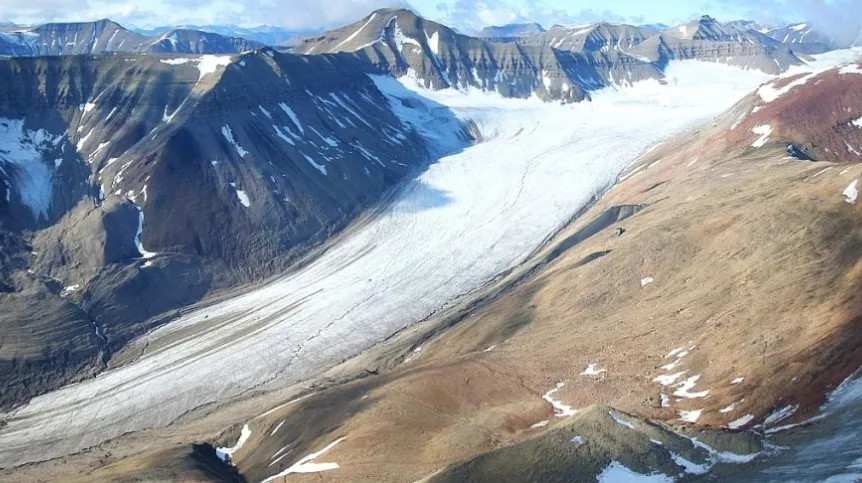
Small glaciers of central Spitsbergen, the so-called Dickson Land, are melting at a very rapid rate. Every year they lose 1 percent of their surface, or 2 km sq. Many of the 150 glaciers may disappear even if we could stop global warming.
Spitsbergen is the largest island in the Arctic Svalbard archipelago. One of the most mysterious and least explored parts of Spitsbergen is Dickson Land - located farthest from the open ocean. Prevailing conditions are slightly different from those closer to the water. Air humidity is lower, there is low precipitation and little snow. Because snow is a fundamental material of glacial ice, glaciers located in Dickson Land are smaller than those at the coasts.
Because of smaller glaciation than in other parts of Spitsbergen, so far this area has not been studied in detail. One of the few scientists who studied 150 glaciers in this area was Dr. Jakub Małecki from Adam Mickiewicz University in Poznań.
His research shows that the central parts of the island, dominated by small glaciers, are melting much faster than the whole ice sheet of Spitsbergen. "On average, the Dickson Land glaciers shrink by more than 70 cm per year in thickness. It is a lot in comparison with other areas of Spitsbergen, where the average melting is 10-30 cm. In the case of small glaciers, decrease in thickness is thus twice as fast as in coastal areas" - Dr. Jakub Małecki emphasized in an interview with PAP.
This means that each year Dickson Land decreases by about 2 km sq. of ice. "If we take into account the fact that the total area of ice in Dickson Land is about 200 km sq - that means that each year this area is reduced by about 1 percent. It\'s a very fast pace" - noted the researcher.
"This is probably because the ice covers just 14 percent of Dickson Land surface, and 86 percent are rocks. They heat up faster and absorb heat from the sun, which they later transfer to ice. This, in turn, may accelerate the melting of ice masses" - the researcher explained.
What\'s worse, the melting of small glaciers can not be stopped, even if we stopped the phenomenon of global warming.
The disappearance of ice translates into changes in the local ecosystem. Individual valleys, which get rid of the ice, begin to function differently, their heat balance changes. Initially, the amount of water carried by rivers increases because of the increased melting. When the glaciers are already too small to produce a lot of water, the flow of rivers decreases as well. "With the loss of bright ice, dark surface of rocks beneath it grows. These dark rocks heat up more quickly than ice, which leads to further acceleration of global warming. The smaller the ice sheet, the warmer the climate. This feedback, particularly evident during the disappearance of sea ice , is called Arctic amplification" - explained the researcher.
Of course, the melting of glaciers also contributes to sea level rise. Every year about 150 million tons of water from the glaciers of Dickson Land is discharged into the ocean. "The melting of the entire world\'s supply of ice translates into millimetre increases in water levels throughout the year, but we need to monitor these small glaciers around the world, to be able to correctly predict how much the sea level will rise in the future" - said Dr. Małecki.
Although the glaciologist has been going on scientific expeditions to Dickson Land since 2007 and was there several times already, this time he based his research on the analysis of topographic data: old maps, digital terrain models created by the Norwegian Polar Institute. "When I\'m on site I examine how the heat is supplied to the glacier, and how melting processes occur. I can say that direct studies are comparable with the analyses that I have conducted. Analyses have direct support in field studies" - he explained.
Dr. Małecki will return to Dickson Land in mid-August. "I\'m going to see if the glaciers are still +alive+, and how they have changed over the year, since my last visit" - he said.
The results of the study have been published in the journal "The Cryosphere". More information about Dr. Małecki\'s research is available on his glaciology blog.
PAP - Science and Scholarship in Poland, Ewelina Krajczyńska
ekr/ zan/
tr. RL













